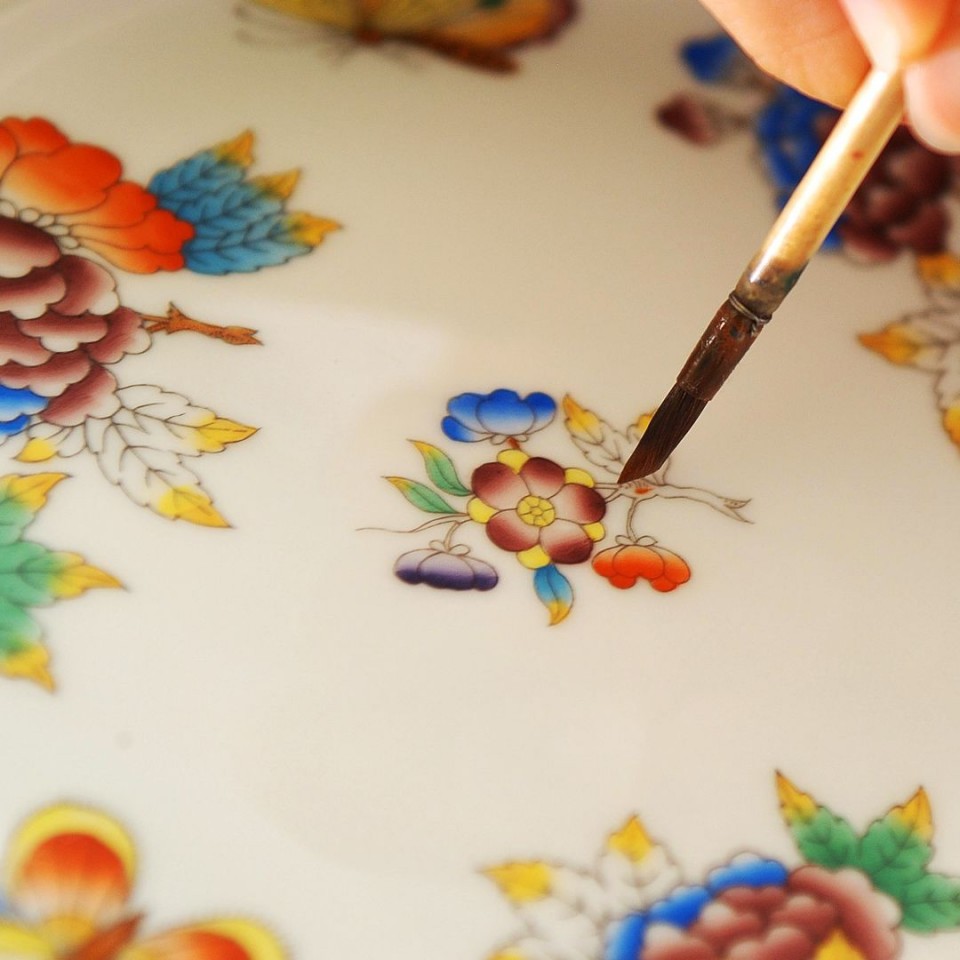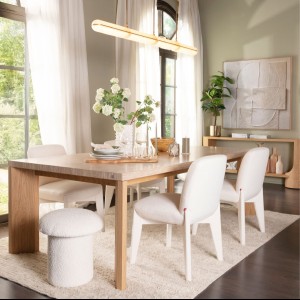
Herend’s Masters of Porcelain
Appreciated by heads of states and aristocracies around the world, Herend luxury porcelain is available in over sixty countries, including the UAE thanks to the Al Mazroui Group. Behind this success lie a high-quality manufacturing technology, a very precise procedure and an extremely skilled workforce who, to this day, still uses ancestral techniques.
Nearly 200 Years of Know-How
The Herend Porcelain Manufactory was founded in 1826 by Vince Stingl in the eponymous Hungarian town. In the early years, the ceramics workshop produced earthenware and focused on research work for porcelain development. In 1839, Móric Fischer, took over and the production of porcelain started. Since Herend won a prize at the 1851 Great Exhibition, held in London, it has been the beneficiary of royal and aristocratic patronages. Today, the brand is still a favourite amongst crowned heads around the world. In the UAE, the luxury porcelain is distributed by Herend UAE, a company of the Al Mazroui Group. A boutique is about to open in Abu Dhabi’s most exclusive shopping centre: Avenue at Etihad Towers.
Herend perpetuates the medieval tradition of the apprenticeship system. With the Industrial Revolution, this system fell into disuse in most European countries. However, at the manufactory, it has lived on and continues to serve the training of new craftsmen by masters, as well as the preservation of traditional technology.
Herend’s Throwers: The Whiteware Experts
Throwers are in charge of shaping the whiteware. The technique used varies according to the type of product being made. For instance, to make flowers, leaves and stems that are later on added to the main piece, the 'manual forming' method is used. A good example of this type of work is the rose knob on the lid of Herend’s tea and coffee pots. They are made with a few petals in a matter of seconds by experienced throwers. Another technique, very specific to Herend, is the basket weaving. To realise this kind of openwork, long strips of paste are placed side by side on a plaster mould.
To attain the title of master, throwers are to pass a professional exam. To succeed, they need to know all the theoretical and practical techniques involved in throwing such as: manual pressing, sticking, manual moulding, piercing and weaving.
Herend’s Painters: The Décor Experts
All Herend products are hand-painted. Herend painters learn their trade at the manufactory’s own school. Following a three-year course, they specialise in different styles and motifs, according to their skills. Most décors are painted within outlines to ensure that they are all the same size and form, regardless of the artist. Painters draw these outlines with metal-tipped pens and subsequently apply paint.
Like throwers, painters who have excelled with their achievements and talent can become masters by taking another exam. Certain décors, the most intricate ones, can only be executed by master painters.
Since 1826, services, gifts, ornaments, jewellery and masterpieces are being executed by hand with the greatest care. Hand-painted and handmade porcelain being less and less common nowadays, Herend stands out as a unique porcelain manufactory. Besides providing a rich selection of forms and décors, it can also offer custom-made pieces to satisfy special requests. This is how Herend managed to maintain a list of prestigious customers all over the world from its beginnings to this day.
Nearly 200 Years of Know-How
The Herend Porcelain Manufactory was founded in 1826 by Vince Stingl in the eponymous Hungarian town. In the early years, the ceramics workshop produced earthenware and focused on research work for porcelain development. In 1839, Móric Fischer, took over and the production of porcelain started. Since Herend won a prize at the 1851 Great Exhibition, held in London, it has been the beneficiary of royal and aristocratic patronages. Today, the brand is still a favourite amongst crowned heads around the world. In the UAE, the luxury porcelain is distributed by Herend UAE, a company of the Al Mazroui Group. A boutique is about to open in Abu Dhabi’s most exclusive shopping centre: Avenue at Etihad Towers.
Herend perpetuates the medieval tradition of the apprenticeship system. With the Industrial Revolution, this system fell into disuse in most European countries. However, at the manufactory, it has lived on and continues to serve the training of new craftsmen by masters, as well as the preservation of traditional technology.
Herend’s Throwers: The Whiteware Experts
Throwers are in charge of shaping the whiteware. The technique used varies according to the type of product being made. For instance, to make flowers, leaves and stems that are later on added to the main piece, the 'manual forming' method is used. A good example of this type of work is the rose knob on the lid of Herend’s tea and coffee pots. They are made with a few petals in a matter of seconds by experienced throwers. Another technique, very specific to Herend, is the basket weaving. To realise this kind of openwork, long strips of paste are placed side by side on a plaster mould.
To attain the title of master, throwers are to pass a professional exam. To succeed, they need to know all the theoretical and practical techniques involved in throwing such as: manual pressing, sticking, manual moulding, piercing and weaving.
Herend’s Painters: The Décor Experts
All Herend products are hand-painted. Herend painters learn their trade at the manufactory’s own school. Following a three-year course, they specialise in different styles and motifs, according to their skills. Most décors are painted within outlines to ensure that they are all the same size and form, regardless of the artist. Painters draw these outlines with metal-tipped pens and subsequently apply paint.
Like throwers, painters who have excelled with their achievements and talent can become masters by taking another exam. Certain décors, the most intricate ones, can only be executed by master painters.
Since 1826, services, gifts, ornaments, jewellery and masterpieces are being executed by hand with the greatest care. Hand-painted and handmade porcelain being less and less common nowadays, Herend stands out as a unique porcelain manufactory. Besides providing a rich selection of forms and décors, it can also offer custom-made pieces to satisfy special requests. This is how Herend managed to maintain a list of prestigious customers all over the world from its beginnings to this day.
Recent Articles




